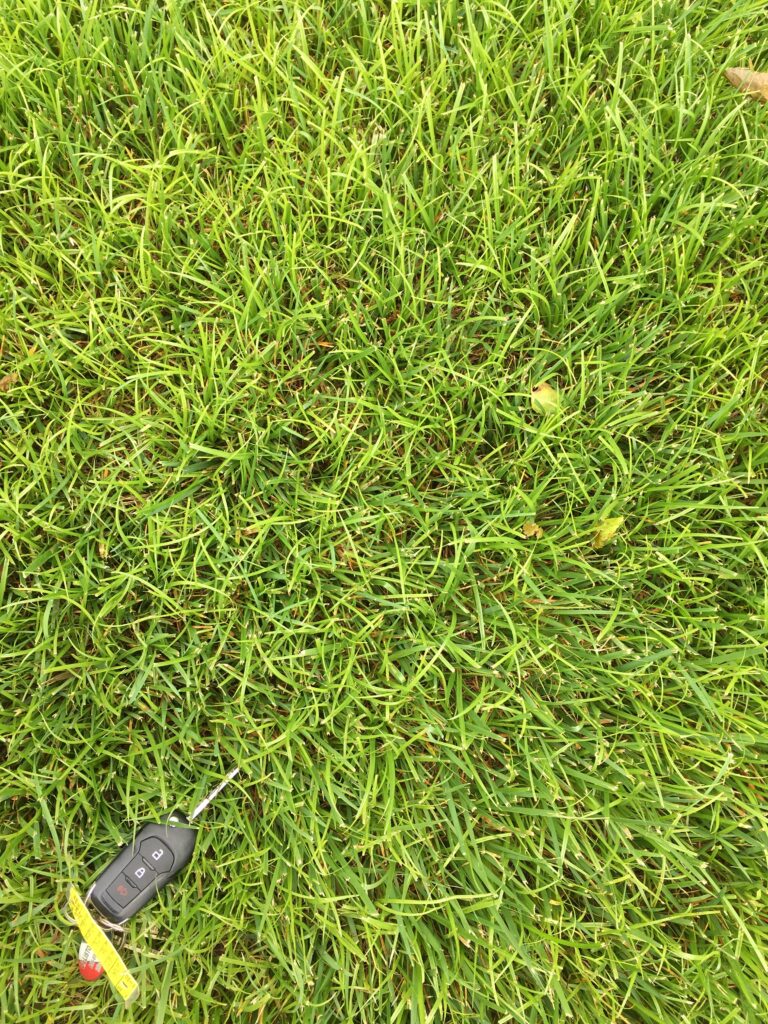Main Content
The recent warm weather means its time to started on lawn and landscape projects. You may have plans to seed bare spots in the lawn that you didn’t get to in the autumn. These bare spots may be the result of fungal diseases, which were aplenty due to heavy rainfall in 2018. Summer annual weeds such as crabgrass or Japanese stiltgrass can out compete desirable species in the summertime and leave bare areas as well. While autumn is the ideal time to seed lawns in New Jersey, spring seedings can be successful if you have a plan to control summer annual weeds.

Weed competition from summer annual weeds is much more intense and is the main reason spring seedings are unsuccessful. In a mature lawn, you can apply a pre-emergence herbicide (crabgrass preventer) to manage weeds such as crabgrass and stiltgrass. If you recently seeded or have plans to, these crabgrass preventers are not an option.
If you are planning to seed this spring, using a starter fertilizer product that also contains the active ingredient mesotrione is an effective option when applied at seeding. It will control weed seedlings as they emerge without harming the grass you’ve seeded. One product for home lawns that contains mesotrione is Scotts® Turf Builder® Starter® Food for New Grass Plus Weed Preventer. Mesotrione is available for professional applicators as Tenacity® and other trade names. Products that contain siduron (Tupersan) are also an option for crabgrass control at seeding. Mesotrione and tupersan are not as effective as other pre-emergent herbicides such as pendimethalin, dithiopyr, and prodiamine that can be used on mature, well-established lawns.
After mesotrione is applied, weed seedlings and sometimes the turfgrass will appear bleached for 7 to 21 days after the application. The turfgrass will recover but most of the weed seedlings will not. Read the label carefully especially when using mesotrione and seeding fine fescue. Do not over apply mesotrione as it can damage grass you’ve seeded, especially perennial ryegrass. In areas of heavy weed pressure, mesotrione and siduron will likely not provide season-long crabgrass control. A second mesotrione application can be made 4-6 weeks after the initial or post-emergence herbicides that conitain quinclorac or fenoxaprop are also options if crabgrass develops mid-summer. Sprayable products sold for crabgrass control usually contain quinclorac or fenoxaprop.













